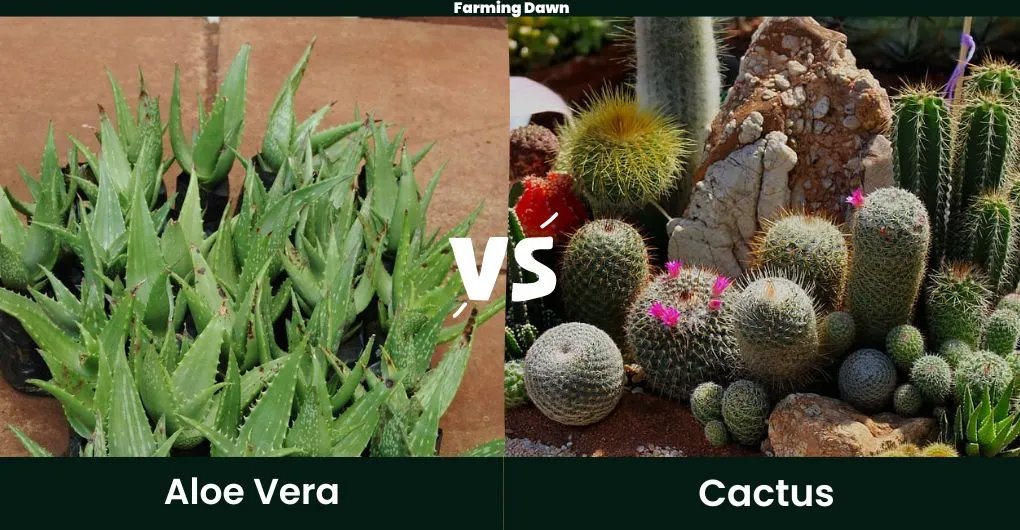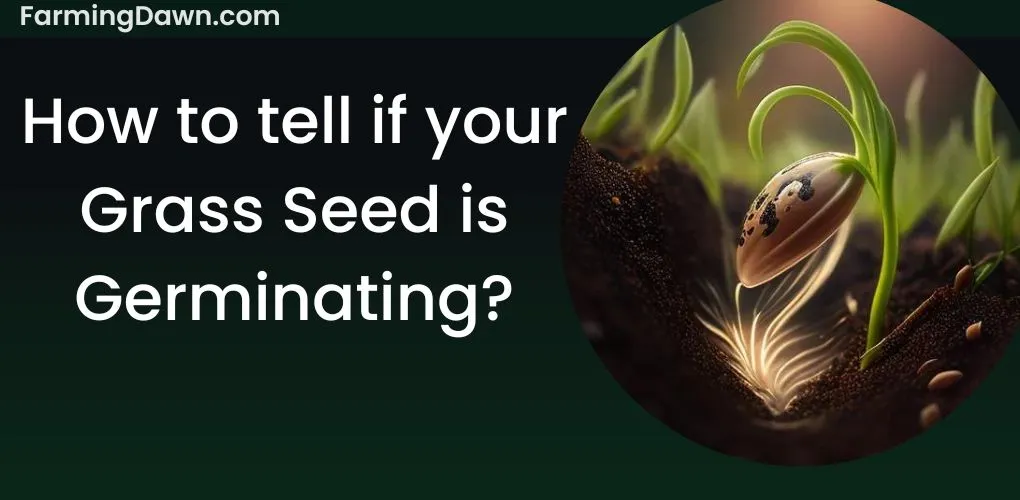Have you ever wondered if aloe vera is a cactus or succulent? It’s an old debate that has puzzled many people over the years. For those of us who have always wanted to know the answer, this article will provide all the information we need!
It can be difficult to feel like you belong in today’s world while not knowing something as simple as whether aloe vera is a cactus or a succulent. If you’ve been asking yourself this question for some time now, then don’t worry – this article has got your back. We’ll discuss everything about aloe vera so you can finally understand and fit in with your peers!
What Is A Cactus?
Cacti are a captivating species of plant, with the potential to bring life and color into any environment. It can be easy to forget that cactus plants have been around for millions of years – from before our oldest ancestors began walking upright.
A cactus is a particular kind of plant that is a member of the Cactaceae family. Native to the Americas, cacti are distinguished by their distinctive features, which include spines and a fleshy, bulging stem that can hold water. The majority of cacti have specialized characteristics, such as shallow roots, that enable them to live in arid and semi-arid environments.
Cacti are found in a broad variety of sizes and shapes, ranging from tiny plants with ball-like structures to enormous, tree-like specimens. Many cacti species are employed in traditional medicine, and some are also well-liked decorative plants.
Related: how do cacti photosynthesize?
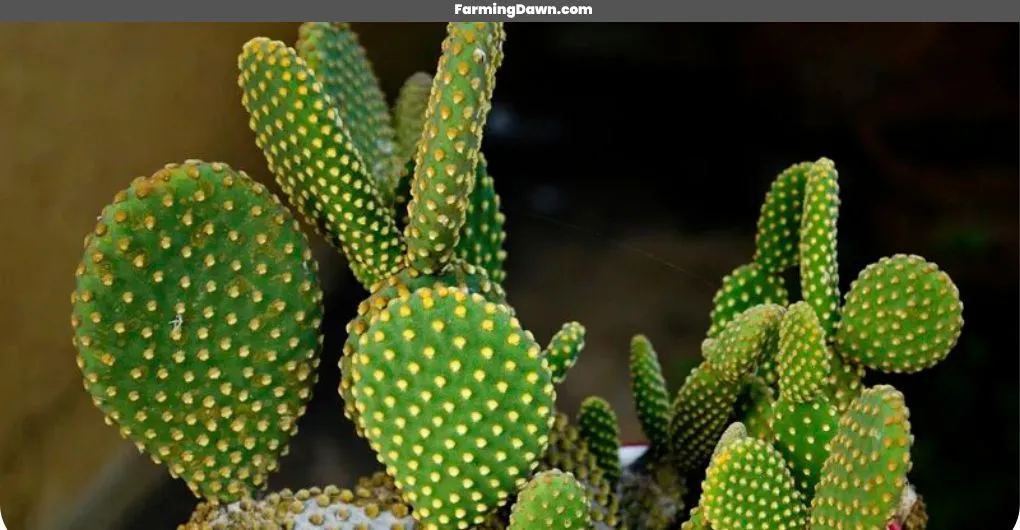
Is aloe vera a cactus? Not quite; although it has some similar characteristics, like its spiny exterior, this succulent is actually very different in many ways. Aloe vera doesn’t require as much water or sun exposure as traditional cacti do, and its fleshy leaves contain higher amounts of moisture than most other desert-dwelling plants.
And why aloe vera is not a catus? Well, don’t rush things. This question is discussed in detail in the below section where I have explained the top 7 differences between cacti and aloe vera. While they both share similarities in their appearance and hardiness, aloe vera is not a type of cactus but rather a member of the succulent family.
What Is A Succulent?
A succulent is a plant with thick and fleshy leaves, stems, or roots that stores water. These plants are adapted to survive in arid regions due to their ability to store moisture in times of drought. Succulents come in many shapes and sizes, from tiny rosettes to large trees.
Related: Do succulents need sun?
Aloe vera is one of the most popular succulents around, it has long been used as an ingredient in cosmetics, medicines, and even food! It’s easy to see why people often ask: Is aloe vera a cactus or succulent? The answer is simple and already discussed above – aloe vera is definitely a succulent, not a cactus. Its spiky foliage makes it look similar to some types of cacti but its juicy inner core reveals it as a member of the succulent family.
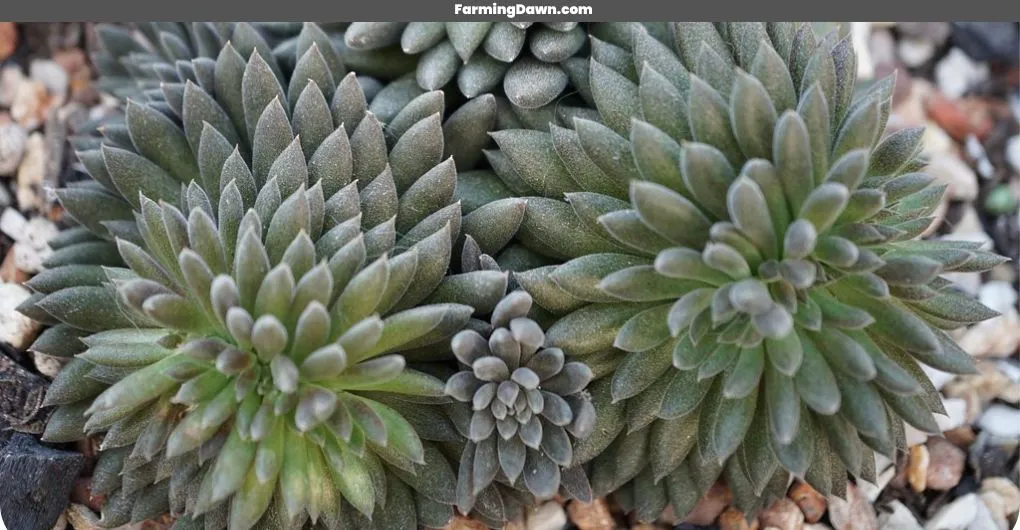
What’s The Difference Between A Cactus And A Succulent?
It’s not unusual to hear people ask if aloe vera is a cactus or succulent. After all, both of these plants share many characteristics like spiny leaves and thick stems that store water. But while they may look alike, there are some key differences between them — the most important being their botanical origins.
Cacti belong to the family Cactaceae and have unique adaptations for arid climates; in contrast, aloe vera belongs to the succulent plant family Liliaceae and has adapted to growing in hot tropical weather.
This means that even though it shares many similarities with cacti, it isn’t actually a member of this group. So next time someone asks you if aloe vera is a cactus or a succulent, you can confidently tell them that it’s neither!
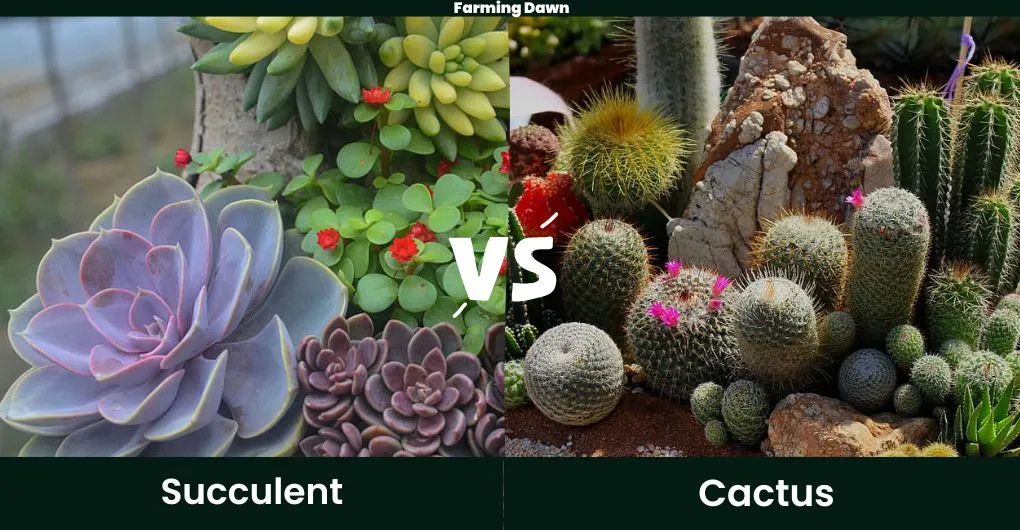
Is Aloe Vera A Cactus? Top 7 Differences
We have all asked ourselves this question, and we are here to give you the answers. Aloe Vera is actually not a cactus instead, it is classified as a succulent. Succulents store water in their leaves while Cacti store water in their stems.
The main difference between aloe vera and cactus plants is that aloes do not have spines like most species of cacti. Even though they come from different families, both types of plants thrive in dry environments with minimal watering required. Let’s discuss the 7 key differences between both species as I promised above:
Difference 1: Family
It’s easy to confuse aloe vera with cacti and other succulents, but in reality, they couldn’t be more different. Aloe is a member of the Liliaceae, or lily family, quite distant from the Cactaceae family that cacti belong to. While both groups have adaptations for surviving dry climates, their benefits are quite distinct.
While cactus spines protect them from predators and extreme temperatures, aloes have thick fleshy leaves that store water during times of drought. This means you can reap the rewards of these two unique plants’ gifts—aloe vera contains powerful compounds like polysaccharides which give it its healing powers, while cacti offer hardiness, timeless beauty, and ease of care!
Difference 2: Leaves
When it comes to leaves, cacti have thick spines for protection whereas succulents like aloe possess soft and fleshy leaves which contain water-storing gel. So to answer the question – is aloe a cactus or succulent? The answer is definitely a succulent!
Difference 3: Size
Aloe vera may look like other members of its family such as agave or cacti but if you take a closer look, you’ll see that its leaves are thicker than those of both plants and it does not produce flowers like them either. If we talk about size then aloe vera can grow about 1-2 feet tall in size while cacti have an average size of 30-50 feet.
Difference 4: Edibility
The fourth difference between aloe vera and cacti is their edibility. With its water-holding fibers, aloe vera stands as a beacon of succulent sustenance in the dry desert. When harvested and prepared correctly, this plant’s fleshy leaves can be consumed to add vitamins, minerals, and other nutritional compounds to one’s diet.
However, unlike succulents such as aloe vera, many species of cactus are not edible due to their spiny nature or bitter taste. To put it another way: where the aloe vera offers refreshment on a journey through the arid clime, most cacti should instead be admired from afar for their unique forms and shapes alone.
Difference 5: Nutrients Storage
Unlike cacti, succulents such as aloe vera store their own nutrients in their leaves, stems, and roots. As a result, they can survive with limited water and sunlight, making them an ideal choice for those who want plants that require minimal maintenance.
Succulents also come in a wide variety of shapes and sizes – from small hens-and-chicks varieties to large century plants – giving you plenty of options when creating unique displays.
Difference 6: Medical Uses
The medical uses of aloe vera have long been studied, thanks to its unique properties as a succulent. It has been used for centuries for soothing and healing skin abrasions. In more recent times, it has become popular in the beauty industry due to its ability to promote healthy skin and hair growth.
Studies suggest that aloe vera can help reduce inflammation, fight bacteria and fungi, boost collagen production, improve hydration levels in skin cells, and even decrease the risk of certain types of cancer.
Some cacti species also have medical uses. For example, the Peyote cactus contains the psychoactive compound mescaline and has been used in traditional medicine for spiritual and medicinal purposes. Other cacti, such as the prickly pear cactus have been used in traditional medicine to treat a variety of ailments, including inflammation, high blood sugar, and gastrointestinal disorders.
Difference 7: Flowering Speed
While cacti and succulents are both drought-resistant, succulents have a much more delicate appearance. Succulents need different care than cacti since they require less water and humidity to thrive. Unlike cacti, which usually bloom once or twice a year, succulents may flower multiple times in a single season if cared for properly.
Why Is Aloe Vera A Succulent?
Succulents are stunningly simple, sublimely steadfast, and strikingly sensational. Aloe vera is one such succulent that has a special significance in the horticultural world. This plant species can be distinguished by its thick leaves which store water for long periods of time, an adaptation that allows it to thrive in harsh climates with limited access to moisture.
The gel-like substance within these leaves also contains numerous compounds that have been used medicinally for centuries, making aloe vera a symbol of healing and rejuvenation for many cultures around the globe.
Frequently Asked Questions Related To Whether Aloe Vera Is Cactus Or Not
What should you choose between aloe vera and cactus?
It depends on what you’re looking for. Aloe vera is known for its medicinal properties and is commonly used in skincare products, while cactus is a low-maintenance plant that can add a unique aesthetic to your home.
Is Aloe Vera a desert plant?
Yes, Aloe Vera is commonly found in arid and semi-arid regions such as deserts and is adapted to thrive in hot and dry conditions. It is native to the Arabian Peninsula but is now cultivated in many parts of the world.
Can I use cactus potting mix for aloe?
Yes, you can use a cactus potting mix for aloe plants because they have similar soil requirements. Both plants prefer a well-draining soil mix that allows water to drain quickly, and a cactus mix typically meets these requirements.
Can cacti be a succulent?
Yes, cacti are a type of succulent plant. All cacti are succulents, but not all succulents are cacti. Succulents are plants that store water in their leaves, stems, or roots to help them survive in arid environments.
Is Aloe Vera A Cactus? Final Thoughts
At the end of the day, is aloe vera a cactus or succulent? It’s clear that aloe vera is a succulent, not a cactus. It may look like one, but its family tree and storehouse of water-soluble nutrients tell us otherwise. Did you know that more than 5 million tons of aloe vera products are consumed globally each year?
I’m always fascinated by how many uses this incredible plant has: from medicinal to cosmetic, aloe vera’s unique properties have been used for thousands of years! So while it won’t be replacing your favorite desert cacti anytime soon, it can still bring beauty and healing into our lives.


